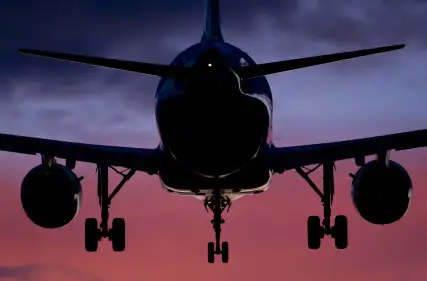
There’s a lot to like in the FAA’s proposed pilot fatigue regulations, namely an extension of pilot rest time and the inclusion of travel time—between the airport and hotel, for example—as part of a pilot’s rest period.
Still, both airlines and airline pilots have raised issues about the proposed rules. In a statement, the Air Transport Association (ATA), the industry trade association for many U.S. airlines, said it is calling for significant revisions. President James C. May said, “We are very concerned that significant aspects of the proposed rule are not science-based.” According to May, the rule, as written, “would create onerous and duplicative regulations, which in major respects do not mitigate fatigue or increase safety.”
But while the ATA says it is concerned about the effectiveness of the proposed rules, ultimately, it’s about money. “These regulations would, however, add significant operational and scheduling complexity that will adversely affect our crews and customer,” May said.
”We are very concerned that the proposed rule reflects a lack of understanding by FAA of how airlines operate. Our concerns are validated by the fact that FAA’s economic analysis is off the mark by at least a factor of 15 in its impact assessment, making it imperative that this proposal be significantly revised.”
The pilot response is rooted in the logic, and logistics, of the rules, namely an extension of maximum daily cockpit time from eight to 10 hours. Back in September, when these proposals were released, pilot and columnist Patrick Smith wrote, “One potentially troublesome part [of the proposal] … is an extension of maximum cockpit time on domestic flights from eight hours a day to 10 hours. For example, it would give airlines the ability to assign pilots to two cross-country flights in the same day. A crew could operate New York to Los Angeles, then back again, without exceeding the 13-hour duty limit or the new 10-hour flight-time limit.”
Pilots Sully Sullenberger and Jeffrey Skiles, who famously ditched US Airways flight 1549 in the Hudson River last year, recently testified before Congress that the cockpit time extension could exacerbate current fatigue issues. “We’re here to tell you that you cannot reduce pilot fatigue by increasing the amount of time that a pilot is at the controls. The amount of time a pilot can fly must be maintained at the current eight hours a day,” Skiles said.
The Coalition of Airline Pilots and the Allied Pilots Association have voiced similar concerns.
Skiles and Sullenberger also said the rest period, which would be increased from eight to nine hours, should be raised further, to 10 hours.
The public comment period for these proposals closed Monday, so the FAA must now take all these criticisms and suggestions into account and shape a final package of regulations. Congress has mandated that new rules be in place by next August.
We hand-pick everything we recommend and select items through testing and reviews. Some products are sent to us free of charge with no incentive to offer a favorable review. We offer our unbiased opinions and do not accept compensation to review products. All items are in stock and prices are accurate at the time of publication. If you buy something through our links, we may earn a commission.
Related
Top Fares From
Today's Top Travel Deals
Brought to you by ShermansTravel
Shop and Save with Country Inns...
Patricia Magaña
 Hotel & Lodging Deals
Hotel & Lodging Deals
$229 -- Chicago: Discounted Rates and...
Francesca Miele
 Hotel & Lodging Deals
$229+
Hotel & Lodging Deals
$229+
$188 -- Honolulu: Save on Oceanview...
Abigail Lamay
 Hotel & Lodging Deals
$188+
Hotel & Lodging Deals
$188+



